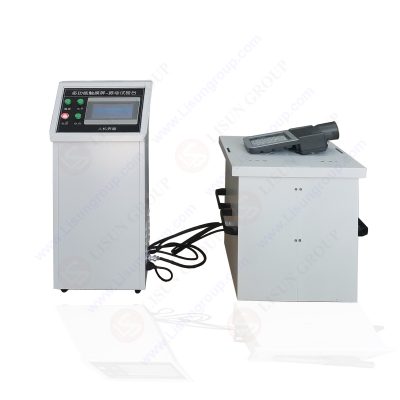

Abstract
Vibration testing is a crucial element in validating the reliability, structural integrity, and durability of components and finished products throughout their operational lifespan. This paper discusses how vibration testing equipment, specifically the LISUN LVD-100KG Electrodynamic Vibration Generator System, plays a pivotal role in determining product resistance to real-world mechanical stresses. By simulating various vibration profiles across multiple axes, this system helps manufacturers meet international standards and improve product designs. Comprehensive performance data, testing configurations, and industry applications are explored alongside comparative analysis, highlighting the significance of modern vibration testing equipment in contemporary quality assurance processes.
1. Introduction
In an increasingly demanding consumer and industrial market, ensuring the longevity and robustness of electronic and mechanical products is more critical than ever. Vibration testing equipment serves as a simulation platform that helps evaluate how products behave under operational vibrations. Whether the product is destined for automotive, aerospace, electronics, or household use, it is expected to perform reliably despite constant exposure to mechanical stress.
The LISUN LVD-100KG Electrodynamic Vibration Generator System is designed for high-performance vibration simulation, enabling precise testing of product response to mechanical stresses. This paper investigates the utility of such systems, discusses standard testing procedures, and provides analytical results from typical testing scenarios.
2. Importance of Vibration Testing Equipment in Product Development
Vibration testing is a foundational step in product development and certification, helping in:
• Detecting structural weaknesses
• Identifying premature failure risks
• Improving packaging designs
• Optimizing component layout and materials
Without proper vibration simulation, products may suffer from early failures due to resonance, fatigue cracks, or misalignments. Vibration testing equipment facilitates both developmental diagnostics and final validation.
Electrodynamic Vibration Generator System LVD-100KG
3. Overview of LISUN LVD-100KG Electrodynamic Vibration Generator System
The LISUN LVD-100KG system provides programmable vibration profiles that comply with international standards like IEC, MIL-STD, ISO, and ASTM. The system supports vertical and horizontal test modes, making it suitable for a wide range of product testing applications.
Key Features:
Parameter
Specification
Max Load Capacity
100 kg
Frequency Range
2–5000 Hz
Max Acceleration
100 g
Max Displacement
25 mm (peak to peak)
Vibration Mode
Sine, Random, Shock
Axis Support
X, Y, Z
Cooling System
Air-cooled
Controller Interface
PC-based with programmable sweep profiles
The system’s ability to simulate shock and continuous vibration makes it ideal for evaluating resonance, looseness, and material fatigue in components like circuit boards, battery packs, vehicle modules, and consumer electronics.
4. Test Methodologies Supported by Vibration Testing Equipment
The LVD-100KG supports several standardized testing methods:
4.1. Sinusoidal Sweep Test
Used to find the natural frequency and potential resonances.
4.2. Random Vibration Test
Mimics real-world vibration environments such as transportation or operational engine noise.
4.3. Shock Test
Applies abrupt pulses to assess resistance to sudden impacts or drops.
4.4. Dwell Test
Applies vibration at a fixed frequency for extended durations to study fatigue.
4.5. Transportation Simulation
Reproduces shipping and handling conditions to validate packaging and product robustness.
5. Application Scenarios
Vibration testing equipment is used across various sectors:
Industry
Test Objective
Example Components
Automotive
Validate mechanical stability
ECU, Sensors, Dashboard
Aerospace
Ensure performance in flight
Avionics, Wiring, Brackets
Electronics
PCB durability & connector stability
Mobile Devices, Laptops
Household Appliances
Noise and vibration reduction
Washing Machines, Compressors
Lighting
Assess joint and housing endurance
LED Drivers, Bulbs
6. Case Study: LED Driver Vibration Test
Objective:
To assess mechanical robustness and solder joint integrity of LED drivers under operational vibration conditions.
Equipment Used:
• LISUN LVD-100KG Vibration Testing Equipment
• Acceleration sensors
• Data acquisition system
Test Parameters:
Test Mode
Sine Sweep
Frequency Range
10–1000 Hz
Acceleration
10 g
Duration
2 hours per axis
Axes Tested
X, Y, Z
Results Summary:
Axis
Observations
X
Minor casing vibration, no structural failures
Y
Slight connector loosening noted
Z
No anomalies detected
The test highlighted potential design improvements in connector attachment methods to enhance product longevity.
7. Software Capabilities and Control Flexibility
The LVD-100KG system includes intuitive, PC-based software that offers:
• Automatic frequency sweep
• Custom test profiles
• Real-time data logging
• Alarm and shutdown features for test safety
• Report generation in CSV and PDF formats
Such automation ensures repeatability and minimizes human error, increasing overall test reliability.
8. Compliance and Standards
The LVD-100KG meets various global testing standards:
Standard
Application
IEC 60068-2-6
Environmental testing
MIL-STD-810G
Military-grade vibration tests
ISO 16750
Automotive electrical and mechanical requirements
GB/T 2423.10
Chinese national vibration test standard
By adhering to these benchmarks, the system ensures product acceptance in both domestic and international markets.
9. Comparative Analysis with Competing Systems
Feature
LISUN LVD-100KG
Competitor A
Competitor B
Max Load
100 kg
80 kg
60 kg
Frequency Range
2–5000 Hz
5–3000 Hz
10–4000 Hz
Acceleration
Up to 100 g
60 g
75 g
Cost-effectiveness
High
Medium
Medium
Software Control
Advanced
Basic
Intermediate
LISUN’s LVD-100KG stands out for its high acceleration capacity, wider frequency range, and superior control software, making it a cost-effective solution for comprehensive vibration testing.
10. Conclusion
Vibration testing equipment is essential in ensuring the long-term stability and reliability of electronic and mechanical components. The LISUN LVD-100KG Electrodynamic Vibration Generator System offers advanced testing features, comprehensive standard compliance, and exceptional control flexibility, making it a premier choice for developers and quality control engineers across industries.
By simulating real-world mechanical stress environments, the LVD-100KG helps manufacturers uncover potential weaknesses, improve product designs, and meet global reliability standards. This ultimately leads to safer, longer-lasting products that perform reliably throughout their lifecycle.
References
LISUN Group. LVD-100KG Electrodynamic Vibration Generator System. . Available: https://www.lisungroup.com/products/led-test-instruments/dc-electronic-load.html
IEC 60068-2-6: Environmental testing – Vibration (sinusoidal)
MIL-STD-810G: Environmental Engineering Considerations and Laboratory Tests
ISO 16750: Road vehicles – Environmental conditions and testing for electrical and electronic equipment
GB/T 2423.10-2008: Basic environmental testing procedures https://www.lisungroup.com/news/technology-news/enhancing-product-reliability-through-vibration-resistance-a-detailed-study-using-lisun-lvd-100kg-electrodynamic-vibration-testing-equipment.html
Comments
Post a Comment